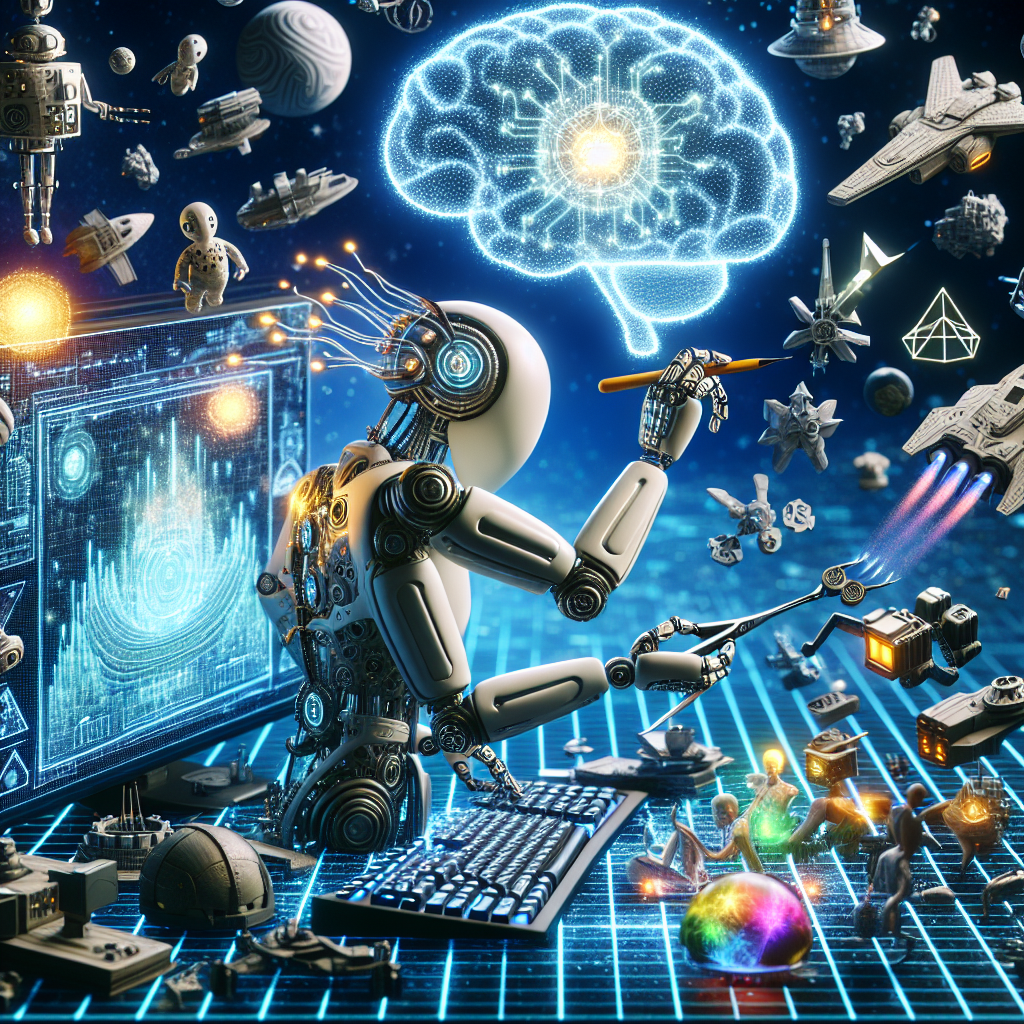Generative AI in Video Game Development: Enhancing Immersive Experiences
Video games have come a long way since their inception, with advancements in technology continually pushing the boundaries of what is possible in terms of graphics, gameplay, and overall immersion. One of the most exciting developments in recent years has been the integration of generative artificial intelligence (AI) into the game development process. Generative AI refers to AI algorithms that are capable of creating content autonomously, such as images, music, and even entire levels or worlds in a video game.
The use of generative AI in video game development has the potential to revolutionize the industry by enabling developers to create more immersive and dynamic experiences for players. By leveraging the power of AI to generate content on the fly, developers can create games that are more responsive to player actions, more personalized to individual preferences, and more engaging overall.
One of the key benefits of using generative AI in video game development is the ability to create procedurally generated content. Procedural generation is a technique where content is generated algorithmically based on a set of rules or parameters, rather than being hand-crafted by developers. This allows for a virtually limitless amount of content to be generated, ensuring that players never run out of new experiences to discover.
Generative AI can also be used to enhance the realism and immersion of video games by creating more dynamic and responsive environments. For example, AI algorithms can be used to generate realistic weather patterns, dynamic lighting effects, and lifelike character animations, all of which contribute to a more immersive gaming experience.
Furthermore, generative AI can be used to create more personalized experiences for players by adapting the game world to their individual preferences and play styles. For example, AI algorithms can analyze a player’s behavior and adjust the difficulty level of the game accordingly, ensuring that players are always challenged but not overwhelmed.
In addition to enhancing immersion and personalization, generative AI can also streamline the game development process by automating certain tasks that would otherwise be time-consuming and resource-intensive. For example, AI algorithms can be used to automatically generate terrain, textures, and other assets, saving developers valuable time and allowing them to focus on more creative aspects of game design.
Overall, the integration of generative AI in video game development has the potential to revolutionize the industry by enabling developers to create more immersive, dynamic, and personalized experiences for players. As technology continues to advance, we can expect to see even more innovative uses of AI in video game development in the future.
FAQs:
Q: How does generative AI differ from traditional game development techniques?
A: Traditional game development techniques involve hand-crafting content such as levels, characters, and assets. Generative AI, on the other hand, uses algorithms to autonomously generate content based on a set of rules or parameters.
Q: What are some examples of generative AI in video games?
A: One notable example of generative AI in video games is the use of procedural generation to create dynamic and ever-changing game worlds. Another example is the use of AI algorithms to generate realistic weather patterns, character animations, and other dynamic elements.
Q: How does generative AI enhance immersion in video games?
A: Generative AI can enhance immersion in video games by creating more realistic and dynamic environments, adapting the game world to individual player preferences, and streamlining the development process to create more engaging experiences for players.
Q: Are there any drawbacks to using generative AI in video game development?
A: While generative AI offers many benefits, there are also potential drawbacks, such as the risk of creating repetitive or uninteresting content, the need for sophisticated algorithms and computational resources, and the challenge of ensuring that generated content is coherent and engaging for players.
Q: What are some future developments in generative AI for video game development?
A: In the future, we can expect to see even more innovative uses of generative AI in video game development, such as the use of AI to create more lifelike and interactive NPCs, dynamic storytelling experiences, and personalized game worlds tailored to individual player preferences.

